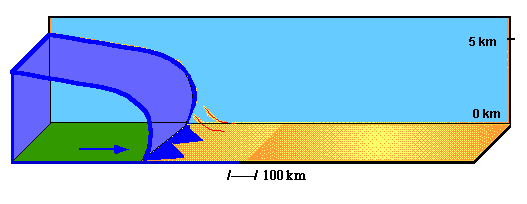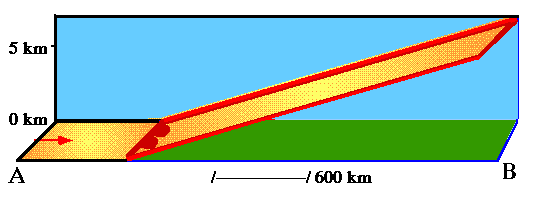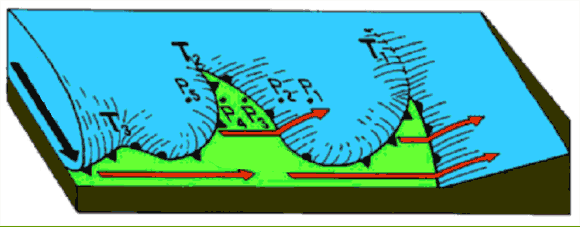 > English > Climate Encyclopaedia > Weather > basics > 1. Weather & Fronts > * Worksheet 1
> English > Climate Encyclopaedia > Weather > basics > 1. Weather & Fronts > * Worksheet 1
|
|
|
|
|
WeatherBasics |
|
|
Have another look at the text on warm and cold fronts then complete the following exercises.
|
Exercise:Compare the cold front with the warm front!
|
 |
|
1. Animation of a cold front, author: Dr. Horst Rudolf, university of Bielefeld in cooperation with his pupils
|
 |
|
|
|
The following picture shows a cross-section across a cold front and a warm front.
|
 |
|
3. Crosssection of warm and cold front (red arrow = warm air / black arrow = cold air)
|
|
Use these animations to help you complete the following exercise and the other worksheets in this unit. Exercise:The picture on the left hand side of this page shows the passage of a cold front. Click on the picture to enlarge it. The text on the right hand side of the page describes the different steps involved. Add the missing words to the text.
|
|
Passage of a cold front:Cold fronts occur when a .............. air mass replaces a ................ air mass. In a cold front the .............. air follows the warm air and, because .................. air is more dense, it pushes the ................ air out of its way, forcing it to rise. As the warm air rises, it becomes ................ and ................. start to form. Precipitation at cold fronts is usually heavier although less geographically extensive (50-70 km) and less prolonged than rainfall associated with warm fronts. The reason for this is that the uplift of the warm air is stronger due to the undercutting of cold air, so......................................., and .......... , ...................................... , ................ and ................................... can occur. The air behind a cold front is noticeably .......................... and ................... than the air ahead of it. When the cold front passes through, temperatures can drop more than ........................... in the first hour.
|
About this page:author: Dr. Yvonne Schleicher - University of Nürnberg, Germany
|

